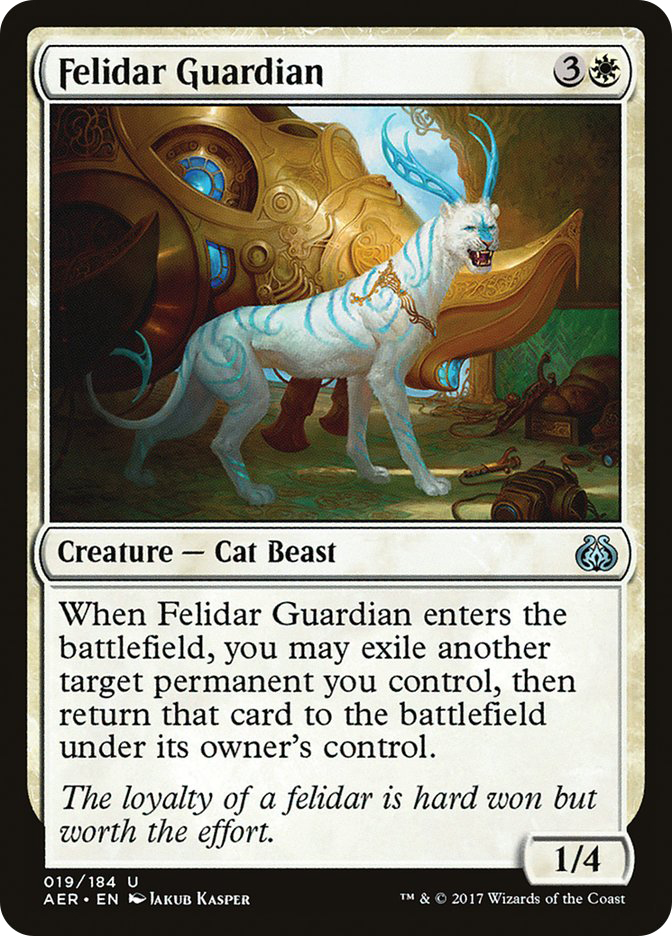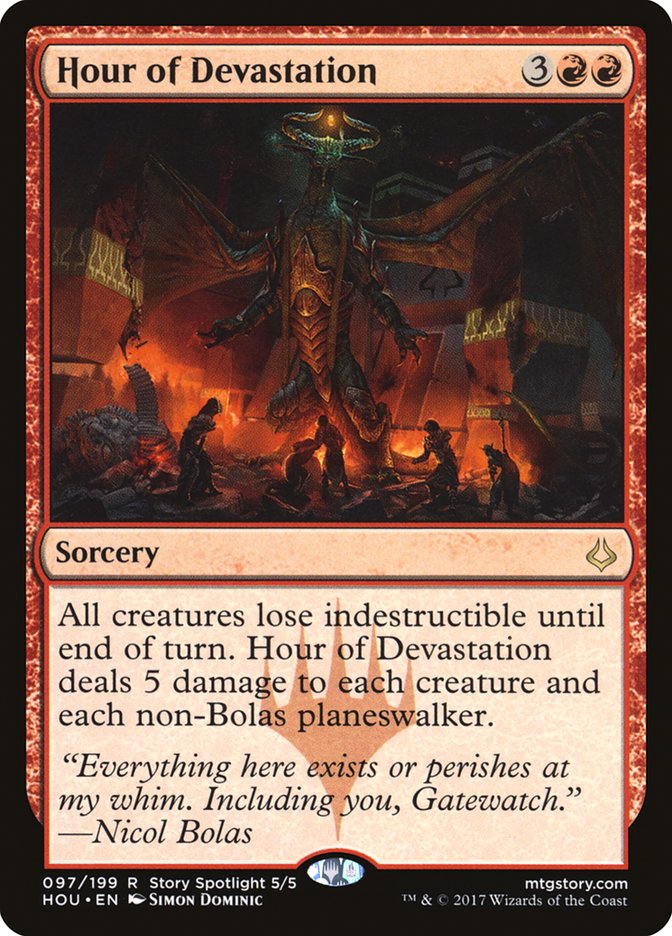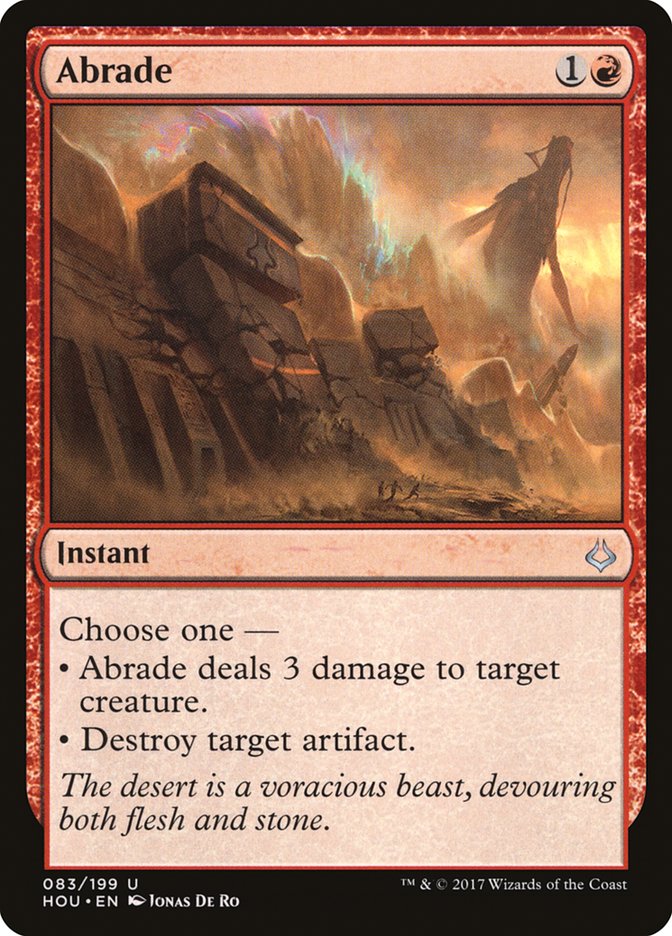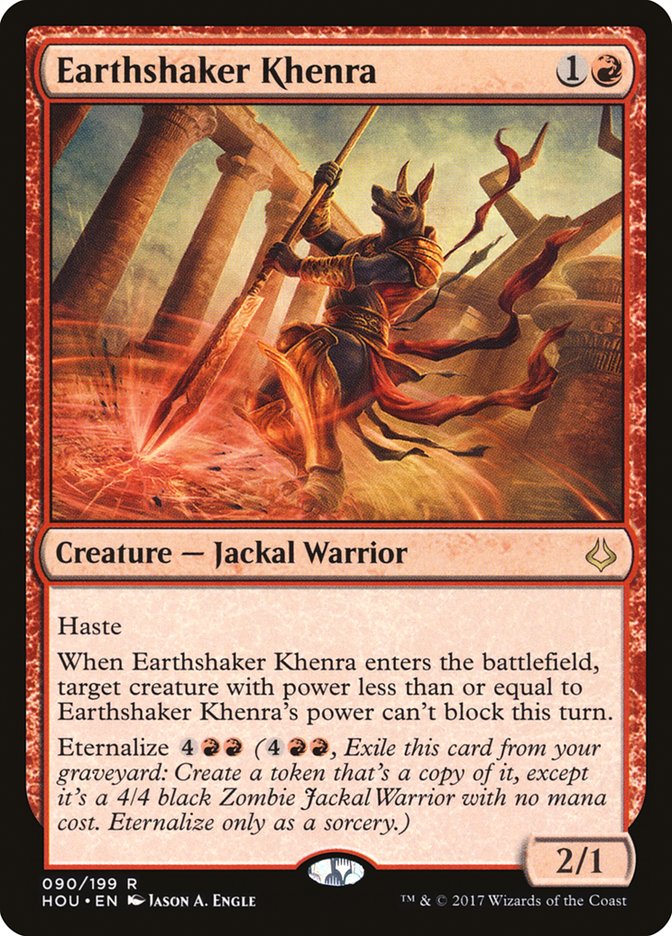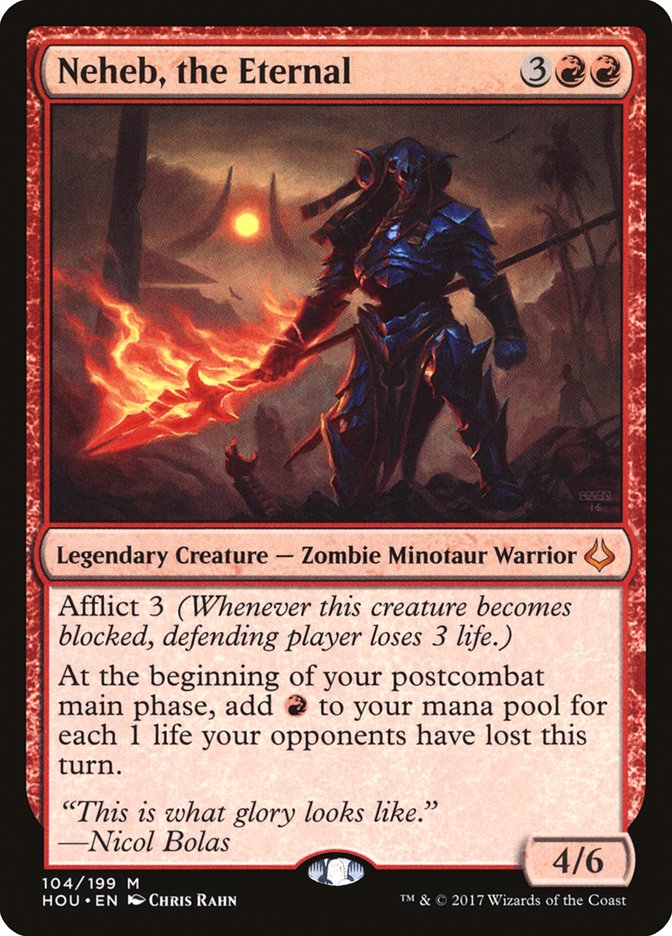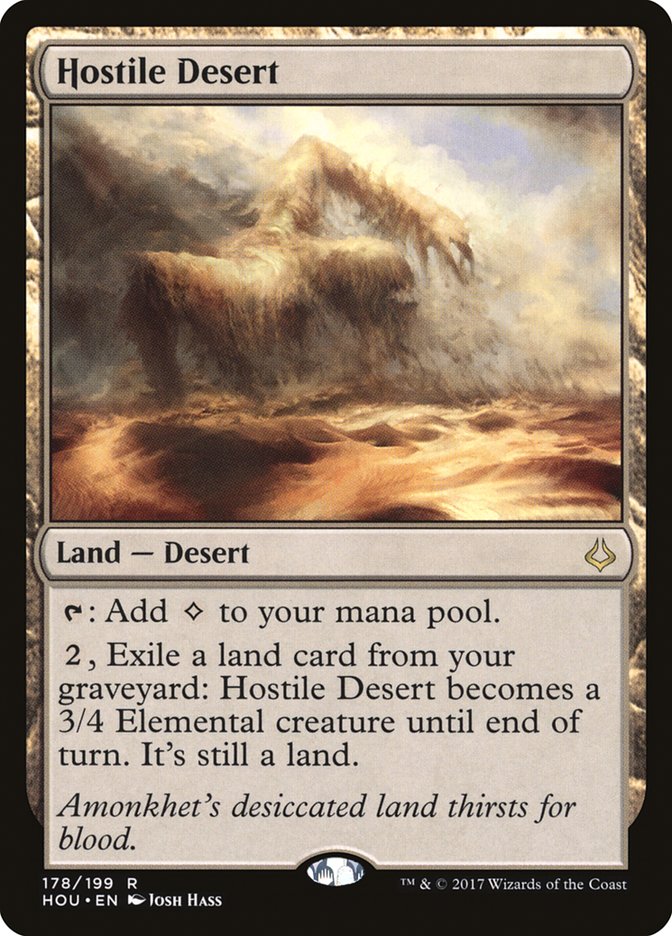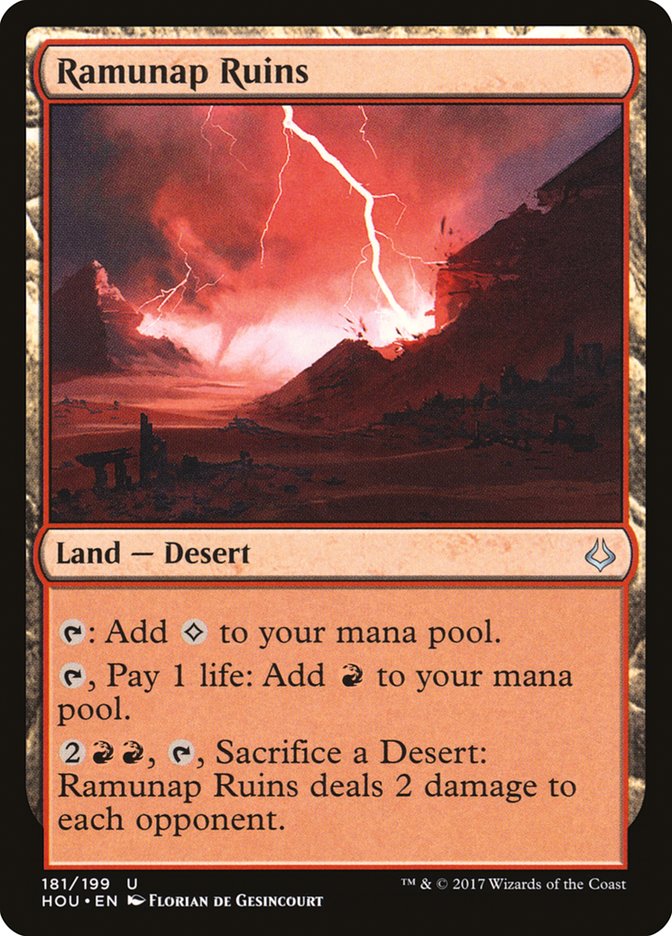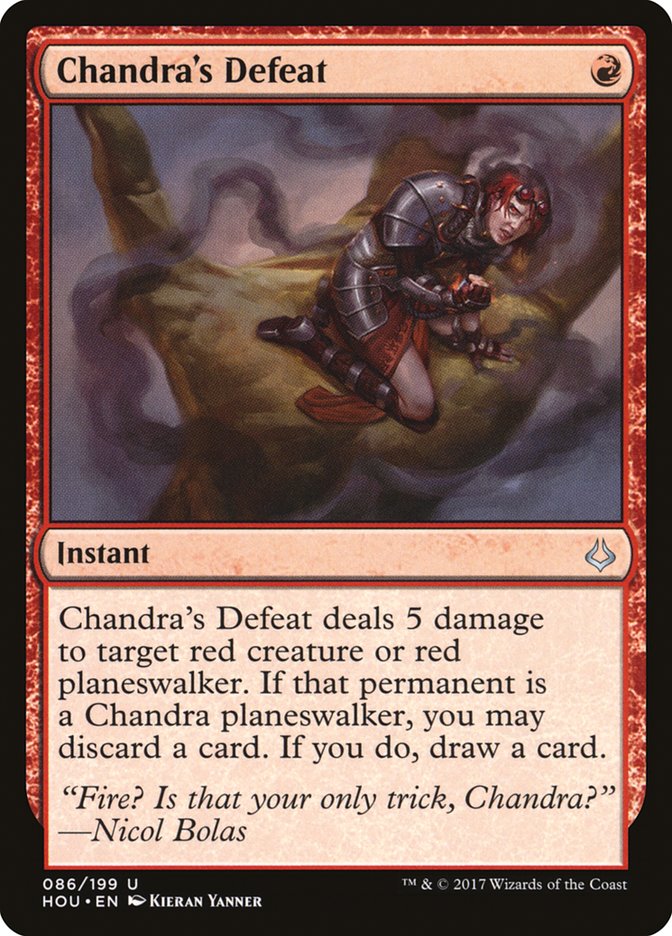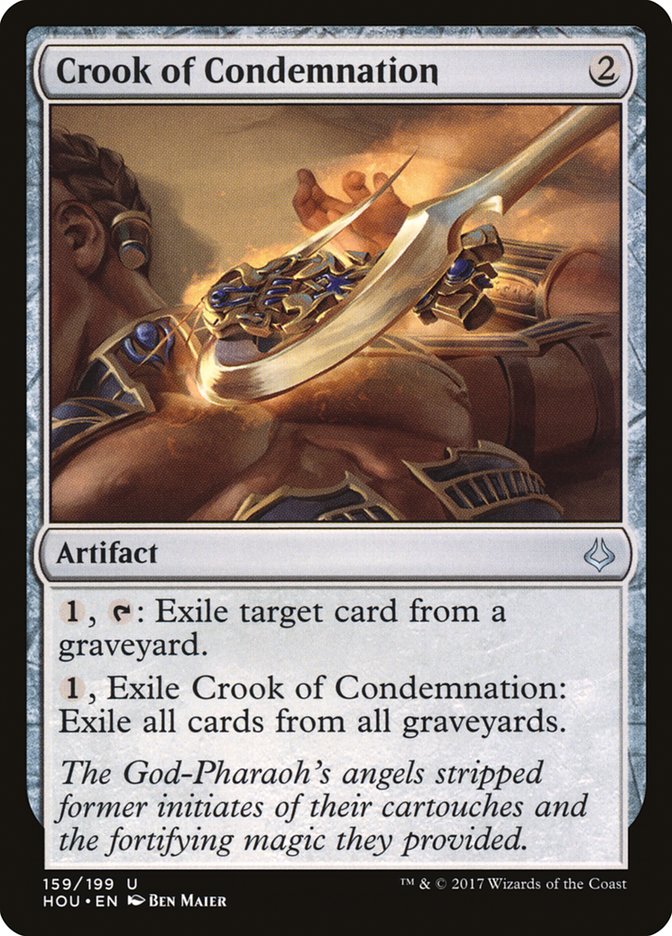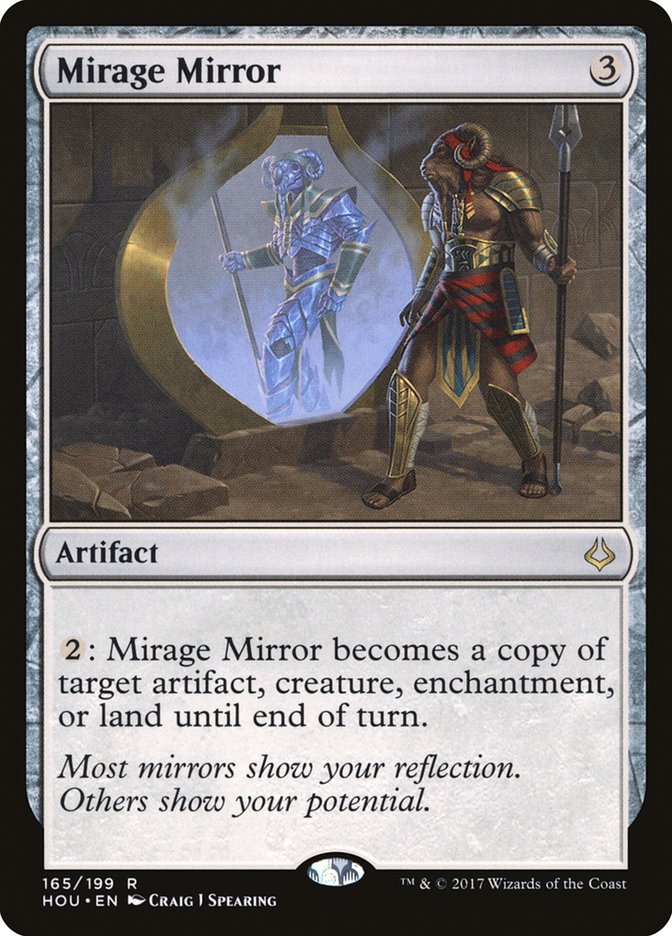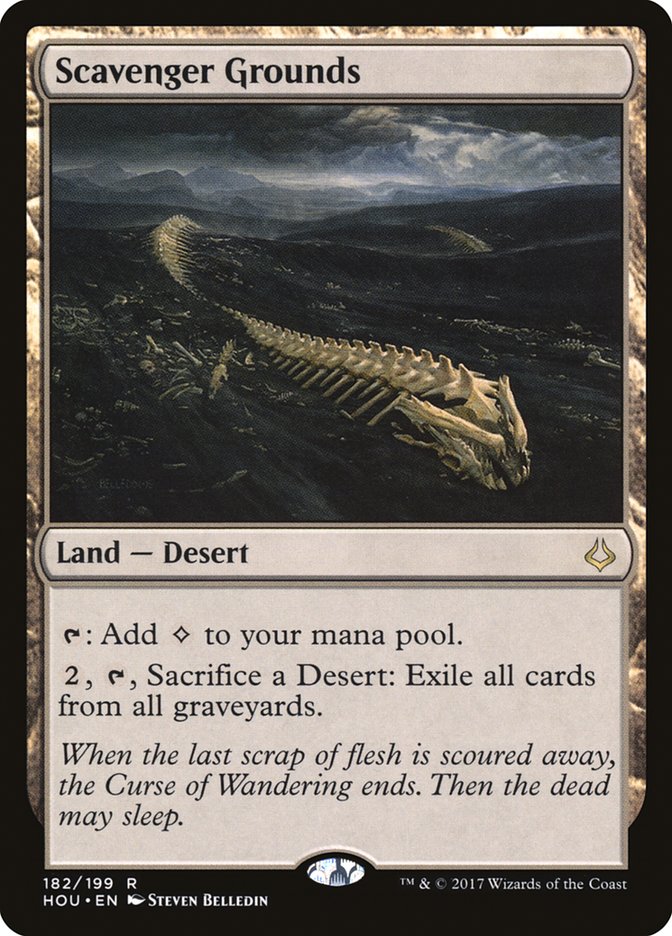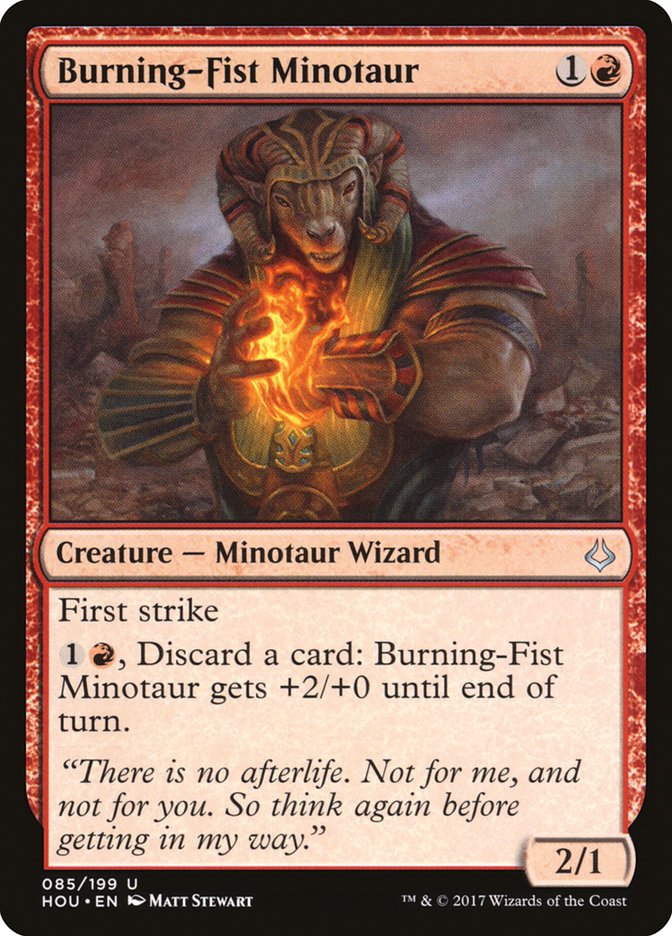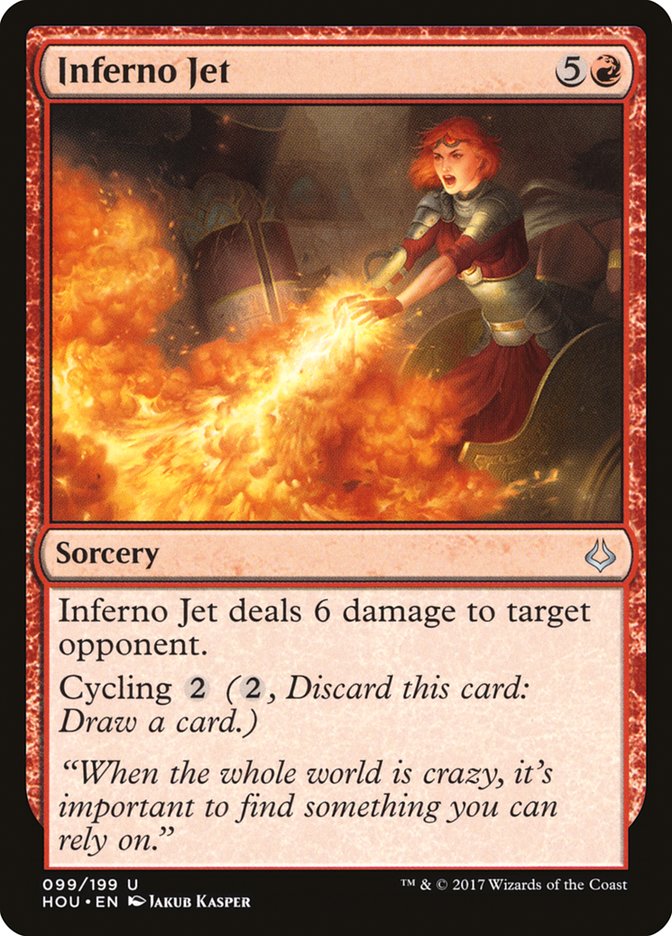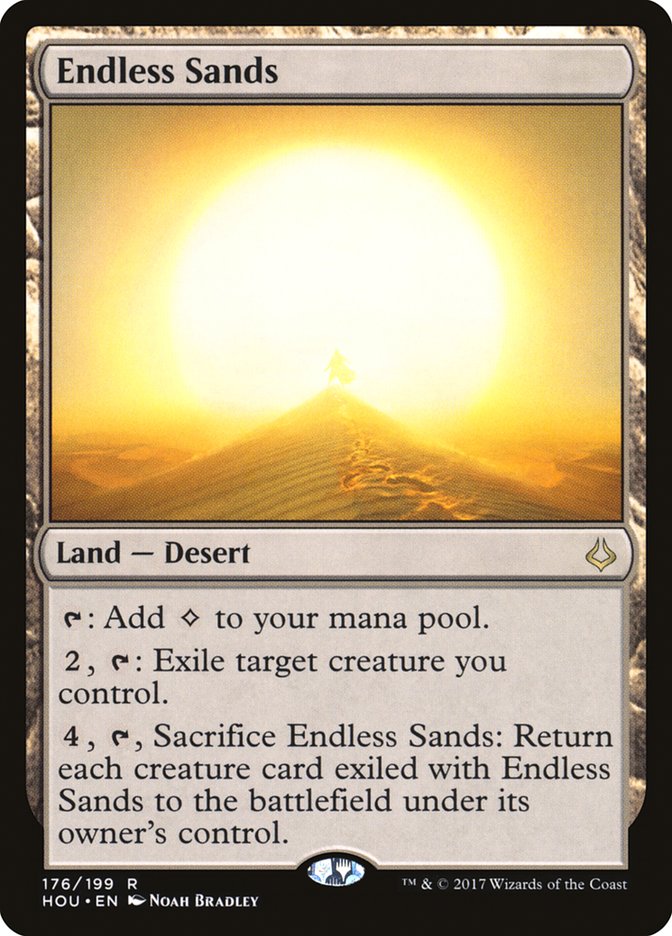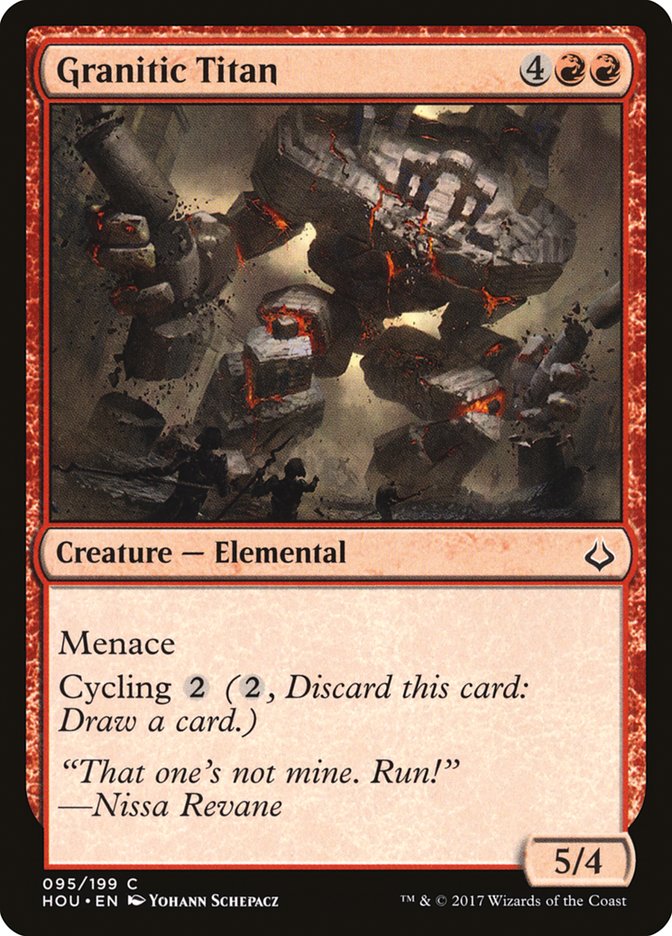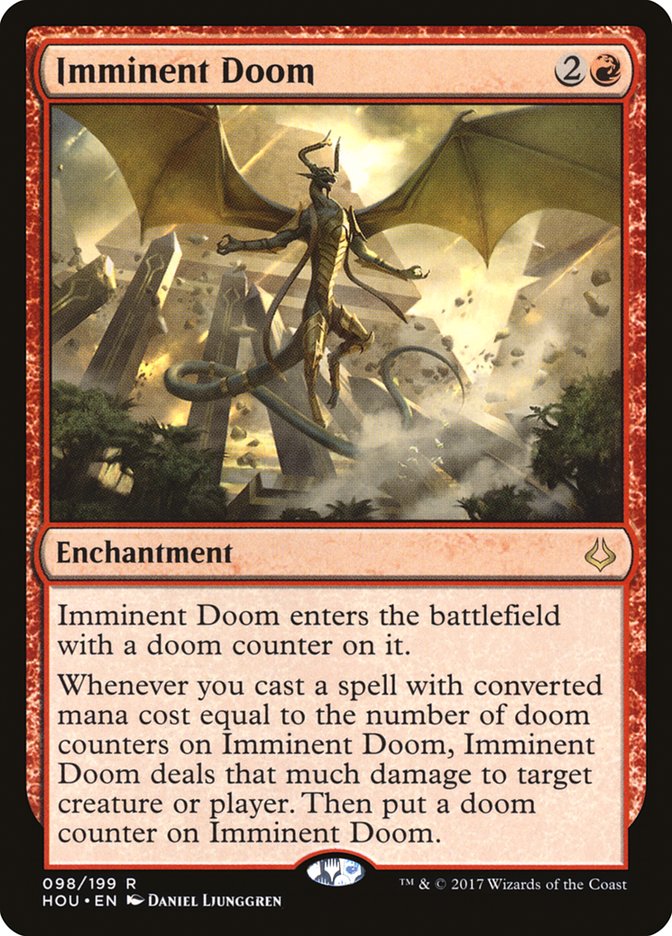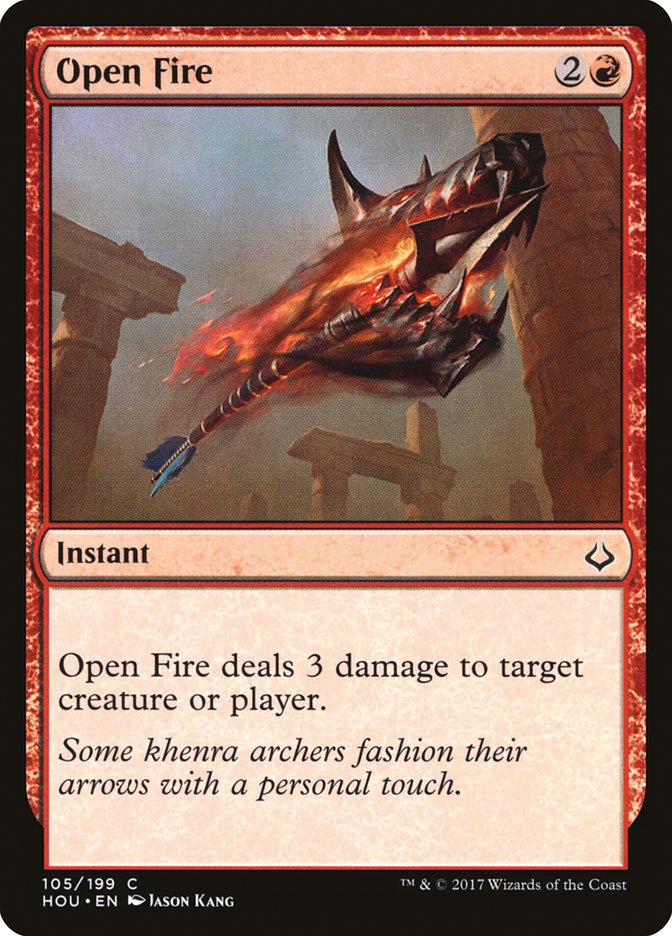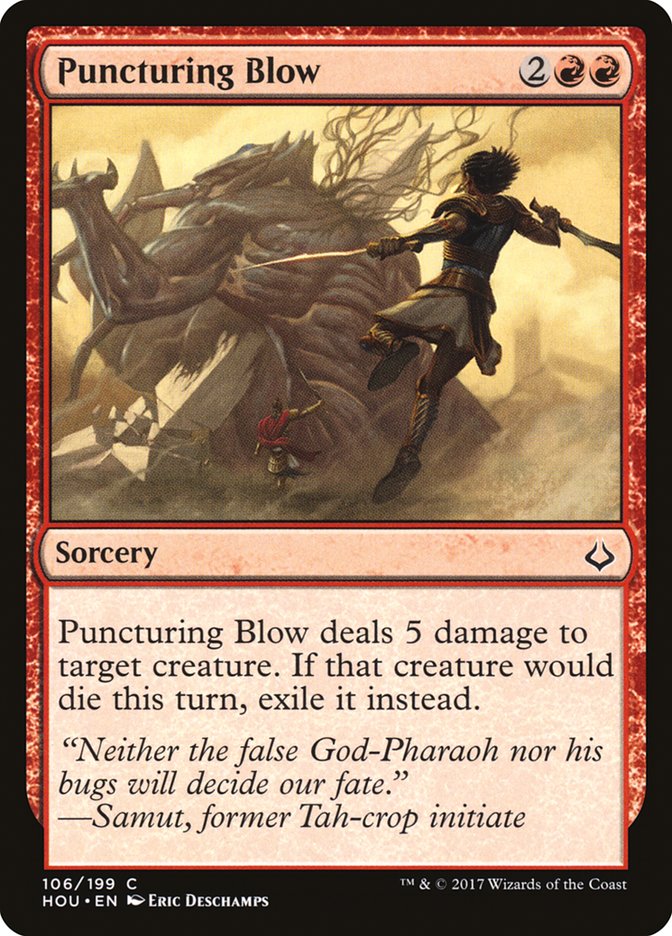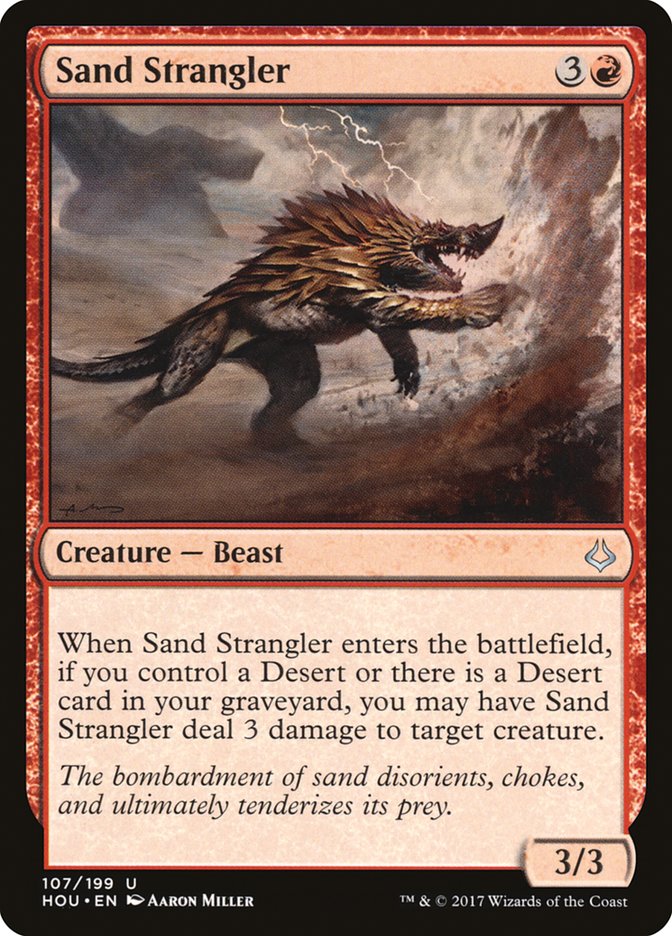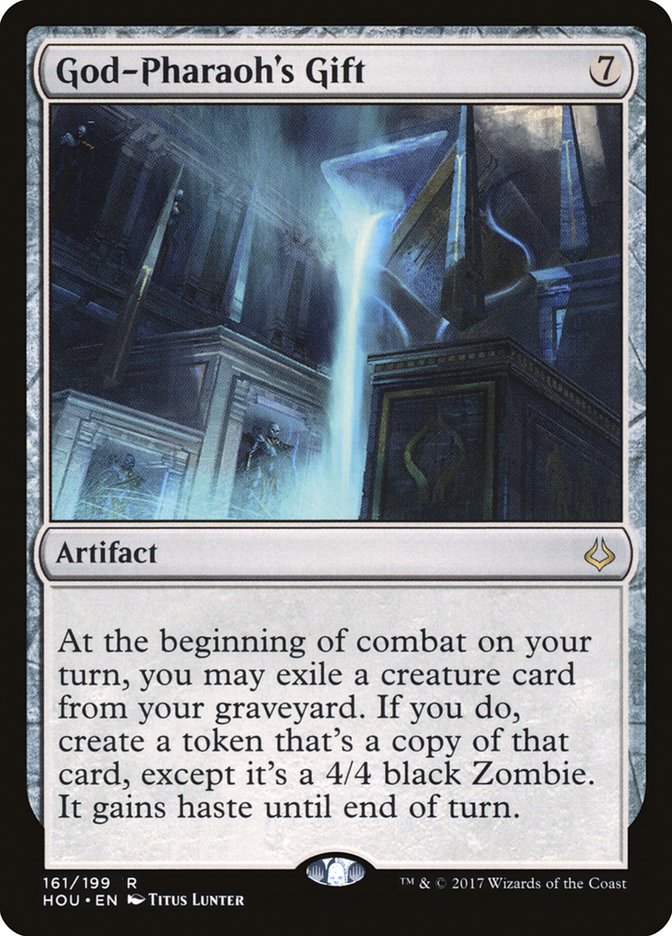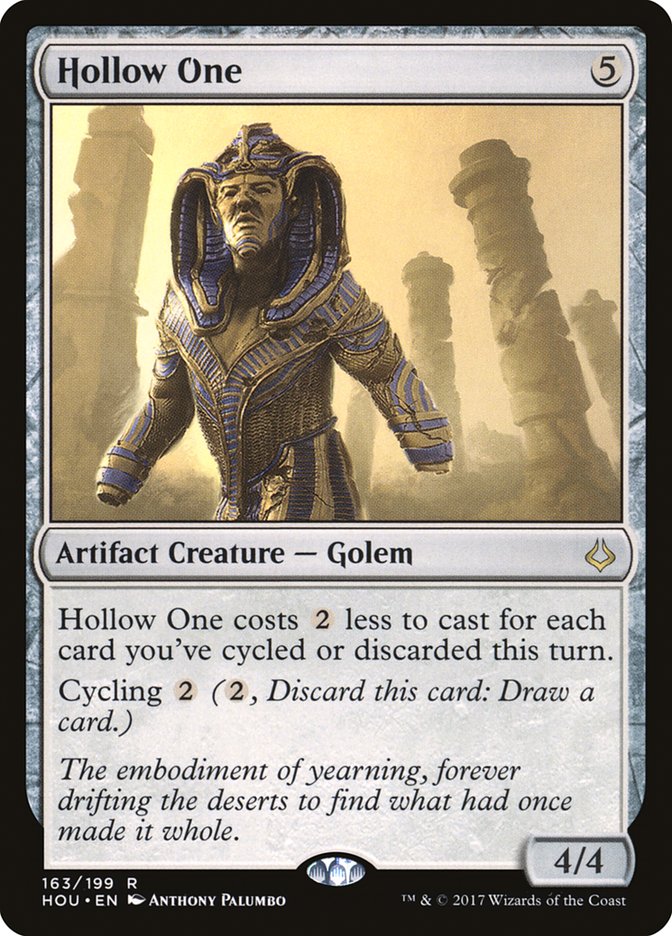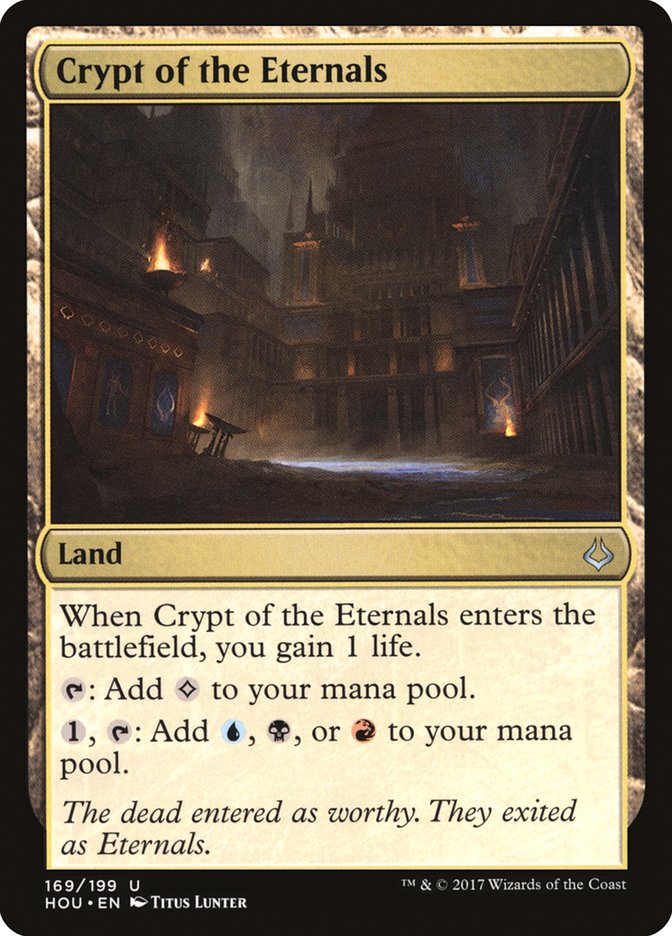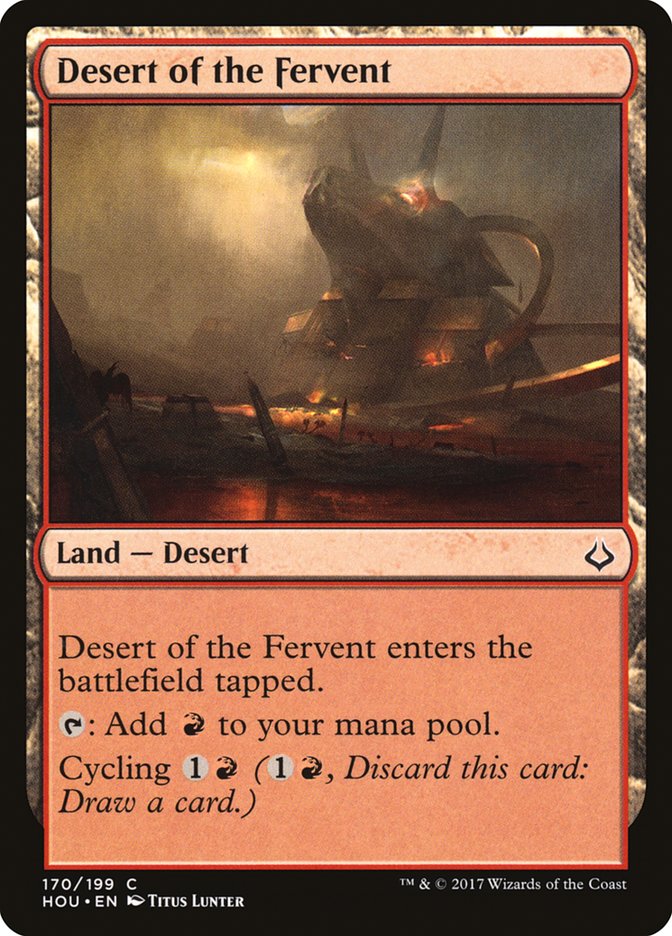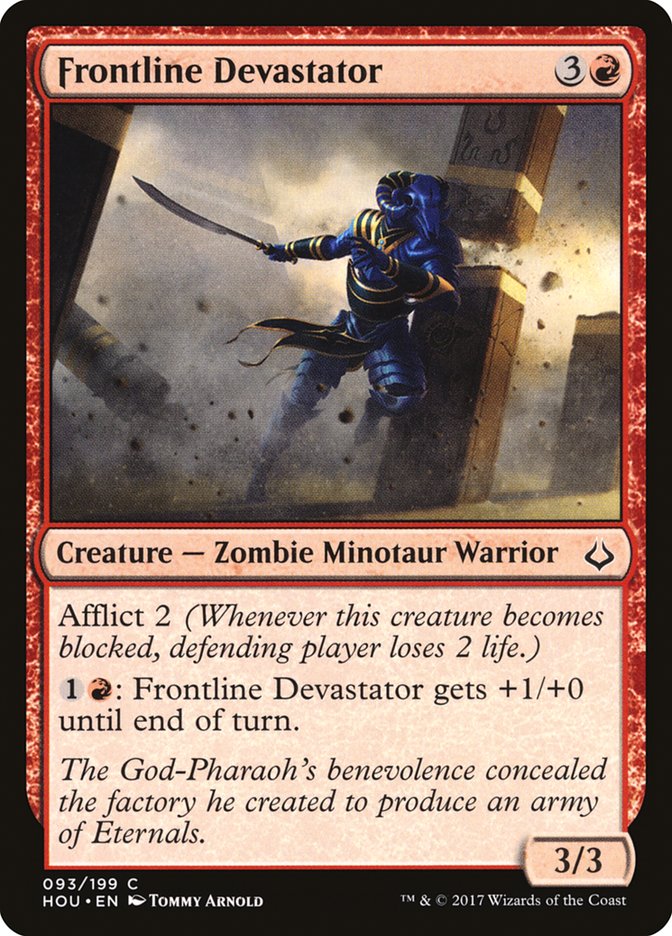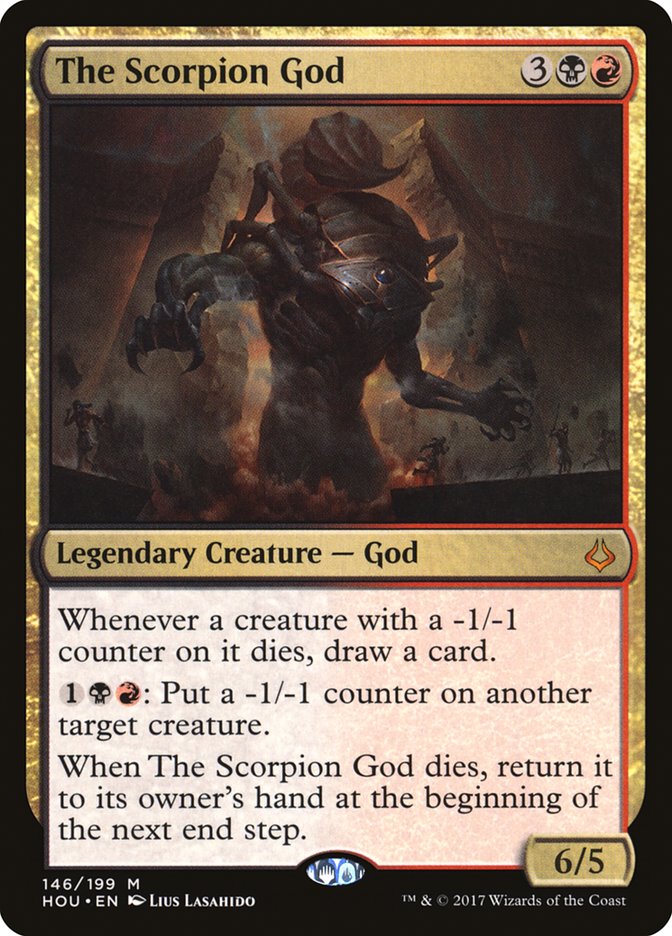It’s been a long time coming, but I’m beginning to have some hope for red.
Creatures (28)
- 2 Eldrazi Obligator
- 2 Reality Smasher
- 3 Thought-Knot Seer
- 4 Falkenrath Gorger
- 2 Kari Zev, Skyship Raider
- 2 Glorybringer
- 1 Hazoret the Fervent
- 4 Ahn-Crop Crasher
- 4 Soul-Scar Mage
- 4 Earthshaker Khenra
Planeswalkers (2)
Lands (24)
Spells (6)

I think a part of the reason that I have that feeling is completely unrelated to “red” per se, and related more to the obliteration of certain problems.
Sure, there are two other banned cards, but from the perspective of a “Red Deck,” the world is more able to be addressed in a straightforward way. No longer is a red deck pressured to make sure that they never let their guard down lest they die to an infinite combo. No longer is a red deck stuck in a position where they have to attempt to put down a clock and disrupt a “free” double-Desert Twister. No longer is a red deck in need of absolutely killing the opponent quickly enough that the world doesn’t end when the Spaghetti Monster arrives.
There are still powerful things going on in Standard. They just are more straightforward than they once were.
The Mission Statement
Now, as with all of my red reviews, it’s important to recognize what I mean by “a red deck” for the purposes of this review. Essentially, I’m talking about a base-red deck that isn’t actively a multicolor deck. If a deck could be said to be “barely” another color, it would definitely count as a “red deck” for the purposes of this article, but if you feel stronger about it as a R/X deck, that isn’t the realm of this review.
In other words, I’m not looking at “red cards.” I’m looking at how the red cards in Hour of Devastation would fit into a red deck.
Without further ado, let’s get to it!
The Card to Watch
Not every set has a “card to watch” – a card that does something so interesting with so much potential to make a change that you just have to think differently. A lot of times, this card doesn’t do anything. At other times, it does quite a bit. To give you a sense of prior “cards to watch,” here is a sampling:
None of these cards really ever took off into the prime time. In all of this time, though, the world has been very antagonistic to “a red deck”. We did see many of these cards take side-gigs in numerous decks, but none of them took off. And Glorious End didn’t do anything. Being a card to watch doesn’t mean you are certainly a world-changer, just that you might be one. Cards like Chandra, Torch of Defiance and Glorybringer aren’t here on this list because they are on the simple list of “The Excellent,” clearly doing impressive work without really shifting the world on its axis.
This Hour of Devastation card makes me think of that border between prospectively world-changing or simply great.
This card might well be the best card in the set, or it might simply be a powerful card that doesn’t really end up making the grade.
For a red deck, Hour of Devastation is clearly at its best home in the Big Red archetype. That being said, it has some major problems.
First of all, it kills all of the Chandra planeswalkers we might play – or at least it usually will. Furthermore, a red deck isn’t going to be a deck that plays a Bolas planeswalker. So playing the card, despite it being able to clean up the battlefield from a Gideon planeswalker, will almost certainly be a play that gets rid of one of your best weapons on the battlefield
Second, in the Big Red archetype at large, the most likely path to that archetype is Eldrazi Red, and Hour of Devastation nukes all of your best cards. In a non-Eldrazi Big Red, only Combustible Gearhulk is a likely survivor of the card, which means you’re really talking about making a decision to do “Damnation.” Unfortunately, it really isn’t that either, failing to kill Torrential Gearhulk, many Bristling Hydras, and Metalwork Colossus. While you do have alternate solutions to the artifacts, this still means you’re talking a reactive card.
For Big Red, reactive cards are not typically the place you want to go. When you have “solution” cards, typically you’re looking for these cards to also be threats. This is largely because if you’re facing another control deck, you need to be able to take the initiative in the fight and end a game. Especially in a world with Glimmer of Genius and Torrential Gearhulk, any time you spend not ending the game can turn into a lost game.
All of that being said, this card is a real game-changer. Anything that reduces the power of Gideon, Ally of Zendikar; Archangel Avacyn; and the Amonkhet Gods is a big deal. Ultimately, for a red deck, this might end up just being a sideboard card, but I still see this as a potentially format-shifting card.
The Excellent
This card is clearly good on its face. An instant for three damage is serious business, and having the ability to take out a Heart of Kiran makes it a big deal as well. Further, as a card that can guarantee on some big creatures like Torrential Gearhulk, Verdurous Gearhulk, and Metalwork Colossus, it has some huge upside. This doesn’t mean that Harnessed Lightning is done, but with fewer reasonable-to-play energy producers in a red deck, Abrade is most likely going to be the go-to card, though it does require dealing with its inability to ever solely take down a card like Glorybringer.
A 2/1 haste creature can help put on the early pressure, but knowing that you have a late-game hasty 4/4 to bring around is deeply significant. While the non-Eternal version of the card isn’t incredibly likely to stop a blocker, it still can, and the 4/4 Zombie Jackal Warrior will almost certain stop a blocker. To my mind, in a short game, Earthshaker Khenra is likely good for two to four damage at least, and in a long game, you can likely put it down for six to eight damage at least, total. If you have anything else going on, this card could make the difference, especially if people are less likely to be running Sweltering Suns in the new world.
The Good
This card has some impressive stats and is relentless, and if it weren’t for the cards it was competing against for space (especially Glorybringer and Reality Smasher), this card would be much higher in my reckoning. As it is, the card is good, very hard to defend against, and with an upside that is demanding a payoff. What is that payoff for a red deck? My head goes to Eldrazi first and foremost, but Walking Ballista and Endless One have a nice ring, and in our colors, Bedlam Reveler is a blast to cast. Most likely, though, will just be unloading a hand full of hefty cards; Neheb take us straight from five mana to nine or ten mana, which is damned scary.
Having a land that you can go to battle with is always a huge deal. Mutavault and Mishra’s Factory may be the classic gold standards, but Hostile Desert sticks out as a reasonably cheap to activate land for a sizable body, and though it demands that you have land in the graveyard to gobble up, there are a great many ways that it could arrive there for a red deck. My favorite is keeping it aggressive with cards like Bloodrage Brawler or Hazoret the Fervent, but slower options like cycling or sacrificing exist too. If it were slightly easier to activate, this card would move up a category.
Speaking of ways to sacrifice a land, Ramunap Ruins is important in two ways. First, it can help support an Eldrazi Red plan by fairly easily supplying colorless and red while also having a reasonable secondary ability. That secondary ability is actually wildly significant. In Standard, there are seven Desert lands that I’d strongly consider playing, and turning any of them into damage to an opponent is deeply significant, especially since you can do it as an instant.
The Sideboard Cards
In the battle of red on red, this is a powerful card. Killing a Glorybringer for a single mana matters, but more importantly, a Chandra planeswalker, particularly Chandra, Torch of Defiance, can often be a several-card investment to kill. This card’s utility will depend on the metagame. This won’t be a Week 1 card, but it could well be a Week 10 card.
Back in 2002, I played Spitting Earth as a sideboard card against decks that put out fast, big creatures, most especially Wild Mongrel and various huge Wurms. If I could have paid one more mana to make it an instant, I would have leapt at the chance; if I could have made it count non-Mountains, I would have thrown a party. Struggle will be a very reasonable sideboard card for decks hunting to answer a big creature that expect to get into a long game; the back end of Survive might be usable, but if it wasn’t there, I’d still rate this as a good sideboard card.
Slower red decks are the most likely to use this card, as a faster red deck likely should be looking for answers that don’t succumb to The Fear. For the slow red deck, though, graveyards have been a troubling space to answer. Big Red and other midrange strategies have a powerful weapon in this card.
Can’t beat ’em? Join ’em! In some instances, a card like this can serve as the answer to a potent creature that you might otherwise struggle to answer, with the upside in that if your opponent hasn’t dropped that card you’re trying to answer yet, you can use their other cards and your own as useful outlets.
For a grinding game, this feels like a great sideboard card. Unfortunately, it feels like artifact kill is more common than ever, so it may not be effective to go this route, but I could see this in a midrange red deck’s sideboard.
Combined with Sweltering Suns, these Walls could be a potent strategy versus a swarm strategy, especially if that strategy doesn’t go too big.
I love this card as a clean answer to a graveyard that can’t be countered and doesn’t require a lot of investment. While not as clean as Crook of Condemnation, this is a reasonable choice as well.
The Role-Players
As a 2/1 first striker for two, this is a reasonable card, but it gets big in a world where small creatures are often in conflict. Since it can also go “boom” in an end-game, there might be metagames where this card is a reasonable choice.
If you’re able to be a more burn-like deck, this might fit in as a small portion of your deck, particularly if you have a cycling payoff.
For this card to pay off, ideally you need to be doing two things at once on the turn it is hitting, or else be getting a massive discount on a card. Perhaps with Inferno Jet, you could make something work…
If you have a deck which you feel like has a weakness to removal, this is not an unreasonable card choice if you can afford the colorless slot and you aren’t making use of one of the many other options.
The Marginal
At this mana count, doing this little damage, this is a hard card to love, but I can imagine a world where this card is a better Flame Wave.
In a prowess-oriented beatdown deck with a low land count, I could imagine this seeing play.
With enough cantrip effects, this might step up to be a more efficient damage source, essentially having a “better” prowess.
Unless you’re making use of cycling as a mechanic, this card wouldn’t make much sense, but you actually might have a reason to do that.
This bizarre card would have to be the very top of your mana curve in a deck that leans top-heavy. The dream scenario would be a world of Reality Smashers and Glorybringers raining down on the opponent, but realistically, I expect you’d likely only get slightly more than two cards on average. I want this card to be awesome, but I doubt.
This card feels so close to working, but it is just shy. At its most realistic, I’d expect you could do six damage with this card, but it would take a lot of effort.
If a Burn deck exists, this is another tool for the box.
The highly played Reduce to Ashes just found its replacement.
In a creature-heavy world, this card is solid. But it would have to be a world with a lot of small targets.
This is a powerful card in a Burn deck against expensive cards. Does that deck exist and does it need help there?
This card would be more meaningful if the deck it would likely be most good against didn’t suddenly have Abrade.
Is the payoff worth the effort? Maybe.
Another colorless source that produces red, albeit with difficulty, but the life can matter.
I’ve played Forgotten Cave. Adding a mana to the cycling is deeply significant. Being a Desert saves this card from my “The Unimportant” category.
The Unimportant
These are basically cards that I don’t expect to have any impact on Standard because they are simply outclassed.
The Splash
There are several cards with another color added to the red cost, but only this one provides sufficient bang for the buck to be worth thinking about for a splash. Black adds in friends like Scrapheap Scrounger and Unlicensed Disintegration as well.
The Conclusion
Big winners seem to exist all over the place for the Eldrazi Red category, with secondary winners on a fast red deck.
Lands are a big reason for why this is the case. I think there are enough land choices that you can easily have stronger red and colorless while also getting a payoff, especially with Ramunap Ruins. These slower red decks also benefit from the current banned and restricted list.
Despite Cartouche of Zeal from Amonkhet, I think we haven’t gained enough cards for a Boss Red-style fast red deck, but I think we may have hit the level where we have enough for a fast red deck that is close to a classic fast red. Amonkhet and Hour of Devastation have a lot of cards to make blocking difficult, and Earthshaker Khenra makes me feel like they can take it to a late game.
We’ve already seen the first decks in Cincinnati as the first stop on the SCG Tour post-Hour of Devastation. I was thrilled to see a few people burned to the ground there. I’ll be working on making it continue to happen from this end, and I look forward to seeing what all of the red lovers out there can do with the set to bring a red deck back to the game. Perhaps now is the time!




